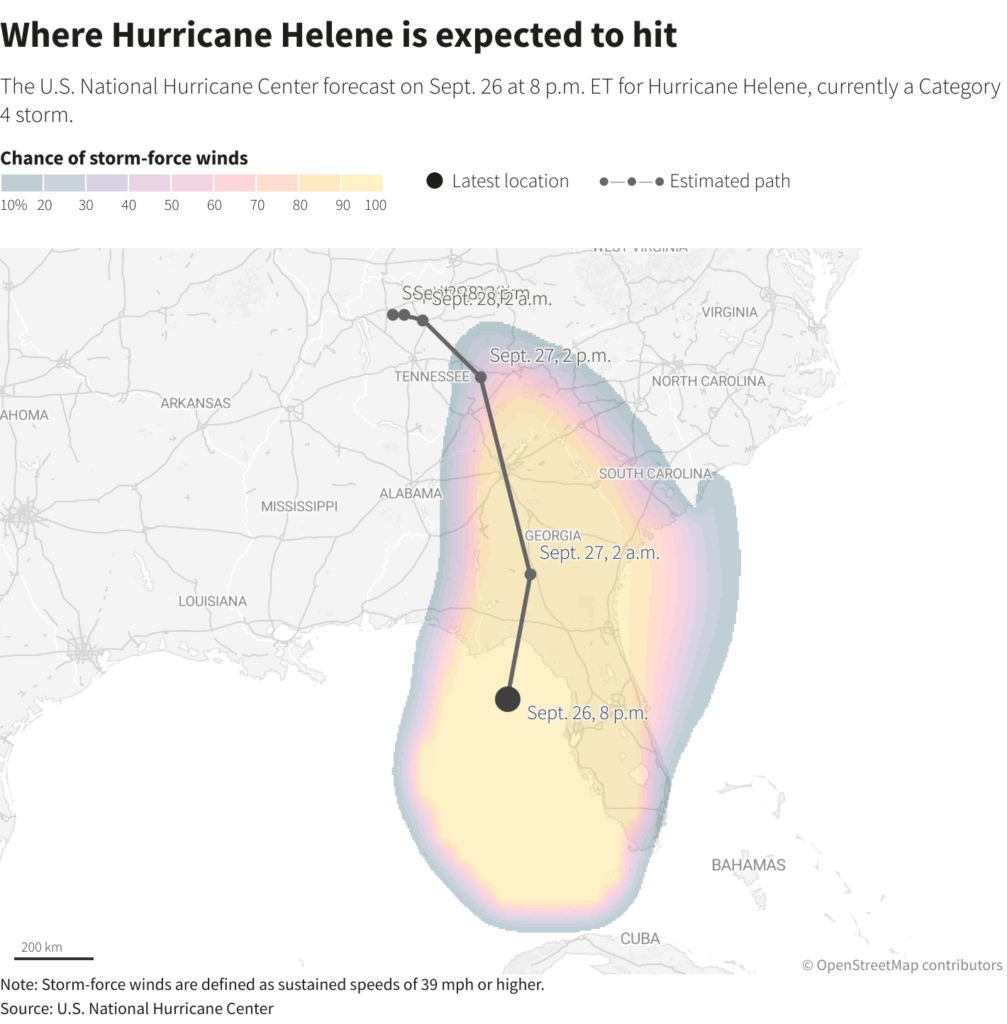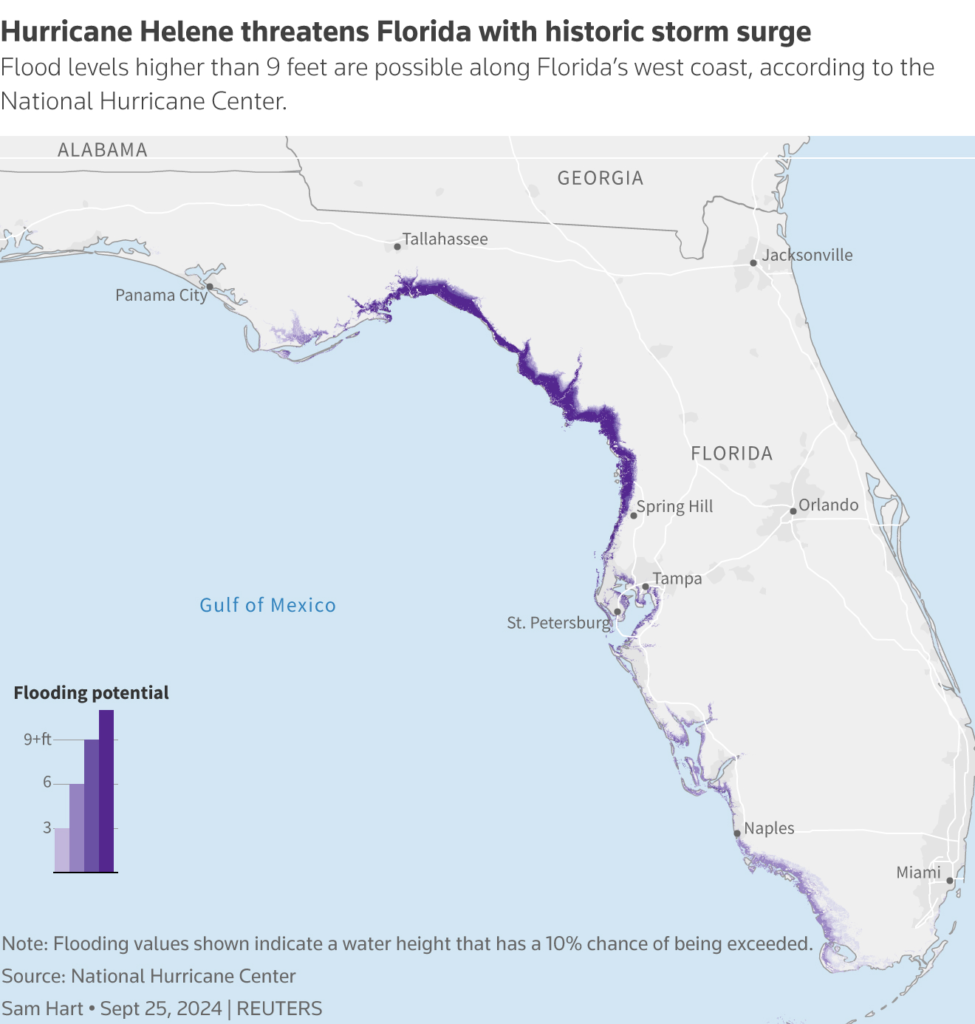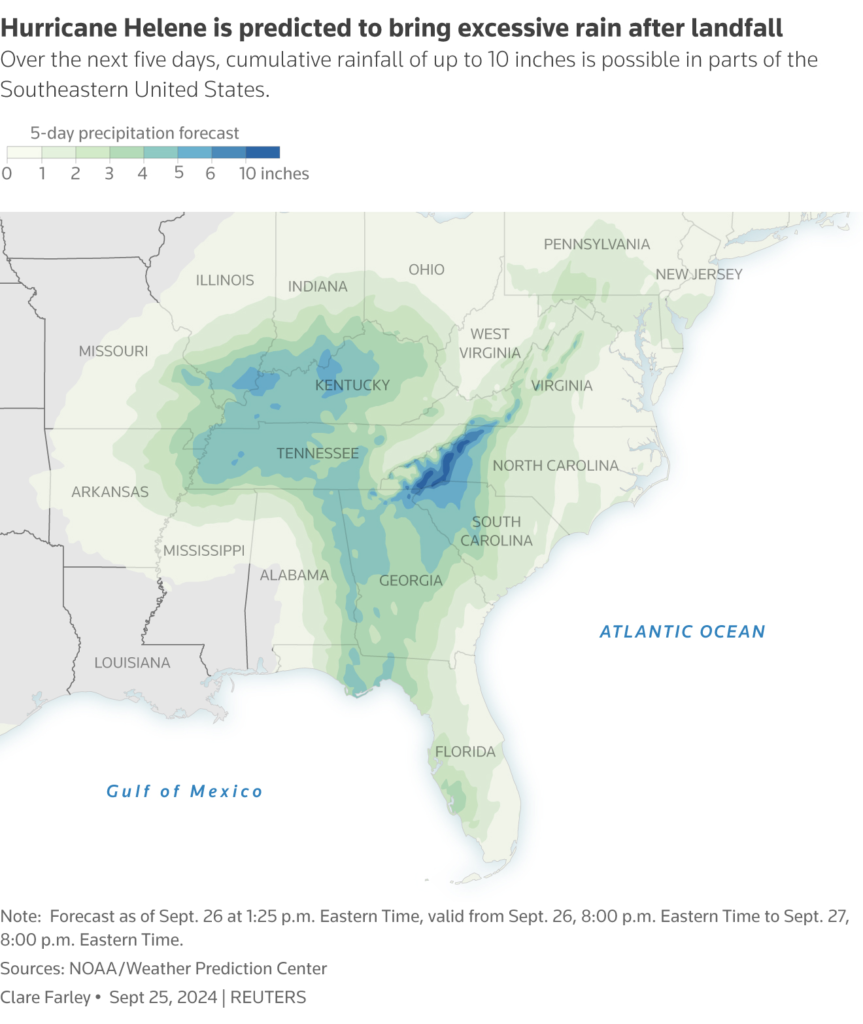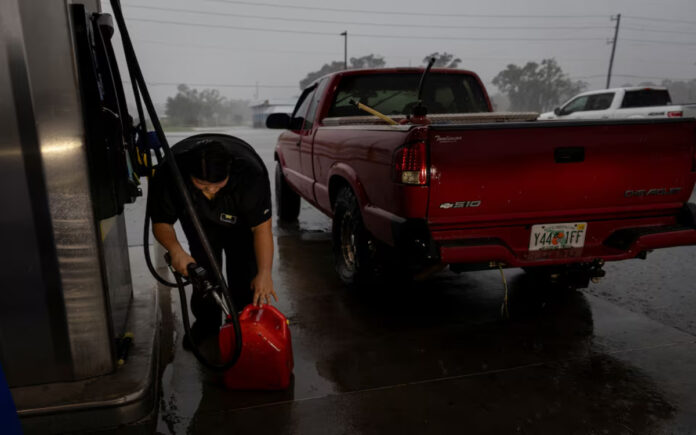Tallahassee: Hurricane Helene made landfall in Florida’s Big Bend region late Thursday, marking one of the most powerful storms to strike the state in recent history. The storm’s destructive force heightened concerns about potential fatalities, extensive damage, and catastrophic flooding, even surpassing the severe deluge that had already battered the region in the days leading up to Helene’s arrival.
Helene landed with sustained winds of approximately 130 mph (209 kph), classifying it as a formidable Category 4 hurricane, according to the National Hurricane Center. Prior to making landfall, Helene had already caused flooding along the Gulf Coast and knocked out power to over 1 million residents across Florida.
Authorities urged those in the storm’s path to comply with mandatory evacuation orders or face potentially life-threatening conditions. The hurricane’s storm surge — a towering wall of seawater pushed ashore by its powerful winds — was predicted to reach up to 20 feet (6.1 meters) in certain areas, comparable in height to a two-story building. Michael Brennan, director of the National Hurricane Center, described the surge as an “unsurvivable scenario,” warning that it had the capacity to destroy buildings and sweep vehicles inland.
Helene’s outer rain bands began lashing parts of coastal Florida long before it made landfall. Heavy rainfall also spread across several neighboring states, including Georgia, South Carolina, North Carolina, and parts of Tennessee. Even Atlanta, hundreds of miles from the Gulf, was placed under a tropical storm warning.

Late Thursday, Florida Governor Ron DeSantis confirmed the storm had claimed its first fatality, though he provided no further details at the time.
In low-lying Pinellas County, which is flanked by Tampa Bay and the Gulf of Mexico, streets were already submerged well before the hurricane’s official arrival. Authorities compared the situation to last year’s Hurricane Idalia, which flooded over 1,500 homes in the region. Videos shared on the county’s social media platforms showed flooded beachfront roads and water engulfing boat docks.
Tampa, Tallahassee, and St. Petersburg airports halted all operations as the storm closed in on Florida.

Widespread Agricultural Damage Expected in Georgia
Forecasters predict that Helene will maintain hurricane strength as it moves through the Macon, Georgia area on Friday. With up to 12 inches (30.5 cm) of rainfall anticipated, the storm threatens to devastate Georgia’s cotton and pecan crops, which are currently in the middle of the harvest season. Georgia Governor Brian Kemp emphasized that the entire state was bracing for significant impacts.
After its initial landfall, Helene is expected to slow as it moves over the Tennessee Valley by Friday and Saturday, potentially increasing the risk of flooding.
Also Read | Helene Strengthens to Major Hurricane, Threatens Deadly Flooding in Florida
Storm Surge Threatens Coastal Communities
The storm surge from Helene, forecasted to be between 15 and 20 feet (4.6 to 6.1 meters), was concentrated in Florida’s Big Bend region where the hurricane came ashore. Widespread evacuations were ordered along the Gulf Coast, including Sarasota and Charlotte counties.
Despite the warnings, some residents chose to stay. Ken Wood, a 58-year-old ferry boat operator in coastal Dunedin, Florida, opted to remain at home with his 16-year-old cat, Andy. “We’re under orders, but I’m going to stay right here at the house,” Wood told Reuters over the phone. “The storm looks like it’ll be a bit west of us, but who knows? I’m sure it’ll be interesting, to say the least.”
In Taylor County, local authorities urged residents who defied evacuation orders to write their names and dates of birth on their arms, in case they needed to be identified later due to loss of life.
Also Read | Harris Vows Support for Ukraine, Denounces ‘Surrender’ Talks in Washington

Also Read | ‘Zombie’ Hurricane John Resurfaces, Pummels Mexico’s Pacific Coast
Early Damage Estimates and Economic Impact
Preliminary estimates from reinsurance broker Gallagher Re suggest that private insurance losses could range between $3 billion and $6 billion, with additional federal insurance losses potentially reaching $1 billion.
Along the U.S. Gulf Coast, energy facilities scaled back operations and evacuated production sites in anticipation of the storm’s impact.
Deanne Criswell, Director of the Federal Emergency Management Agency (FEMA), announced plans to travel to Florida on Friday to assess the damage caused by Helene. The National Hurricane Center predicts the storm could bring up to 15 inches (38.1 cm) of rain in some areas, triggering extensive flash flooding in urban regions.
“You need to prepare for prolonged power outages,” said Jamie Rhome, Deputy Director of the National Hurricane Center. “Strong winds will bring down trees, blocking roads and making travel impossible.”



